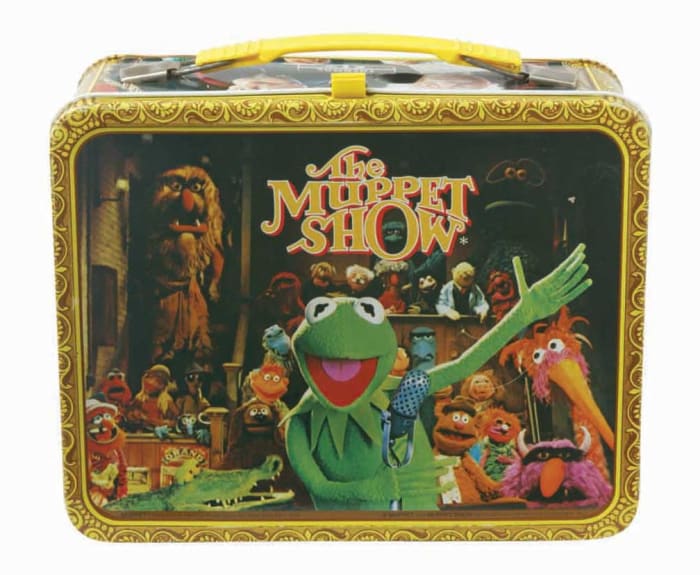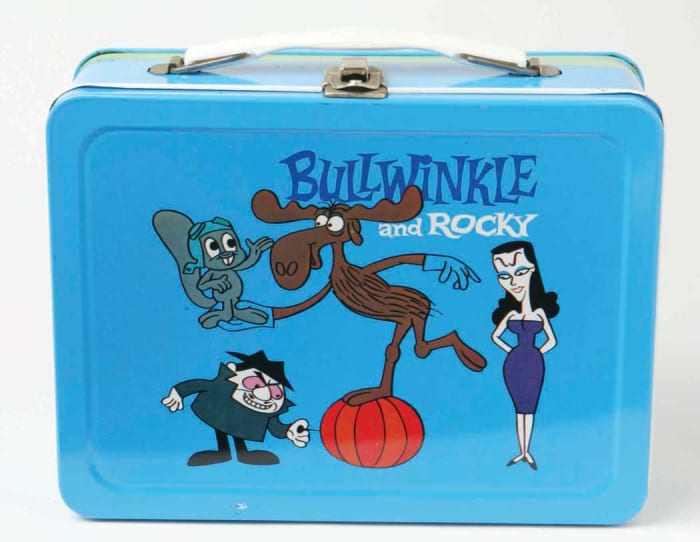#Lunch #Box #History #Unpacked
Like many cultural phenomena in mid-century America, the lunch box owes its popularity to television.
Until the 1950s and the advent TV’s influence on pop culture, the lunch box belonged to the working class. The plain, unadulterated metal-dome lunch box was essentially blue-collar, the perfect utilitarian utensil. It carried food for hard-working people and that was it. If anyone gave thought to the lunch box it was only in terms of what was in it.
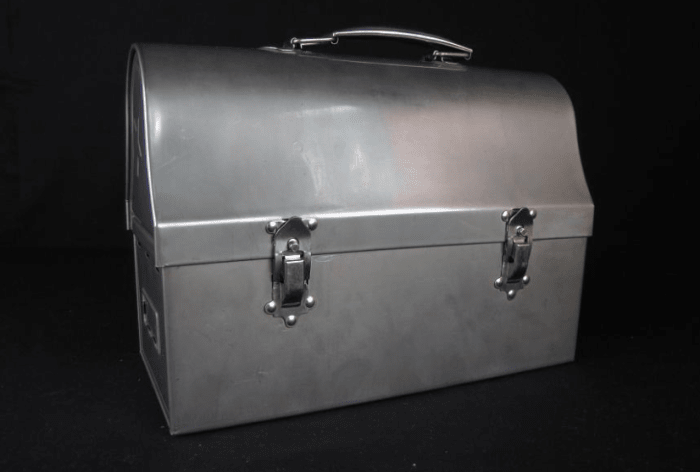
This practical metal, dome lunch box was made by Thermos in the 1940s.
Smithsonian National Museum of American History
That all changed when Aladdin Industries manufactured the first children’s lunch box based on a TV show: Hopalong Cassidy. Debuting in time for back-to-school 1950, 600,000 Hopalong Cassidy lunch boxes were produced, selling for $2.39.
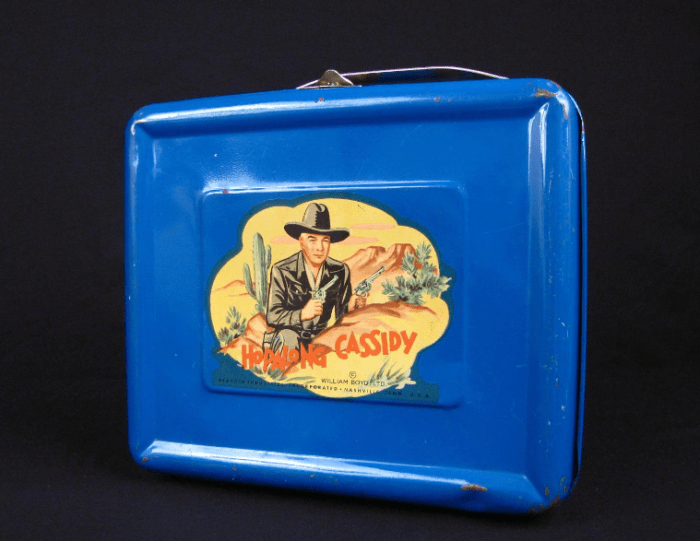
Hopalong Cassidy was a TV, radio, and comic series in the 1950s, and the frenzy for Hopalong Cassidy merchandise led to more than 100 companies manufacturing more than $70 million dollars worth of Hopalong Cassidy products.
Smithsonian National Museum of American History
Suddenly and incomprehensibly, the lunch box was fun. Your favorite cowboy would be going to school with you. The era of lunch box as personal statement had begun. Goodbye blue-collar staple; Hello school-kid fixture.
Although the “Hoppy” lunch boxes weren’t the first licensed effort – the first such lunch box was a Mickey Mouse number released in 1935 – they were the most influential.
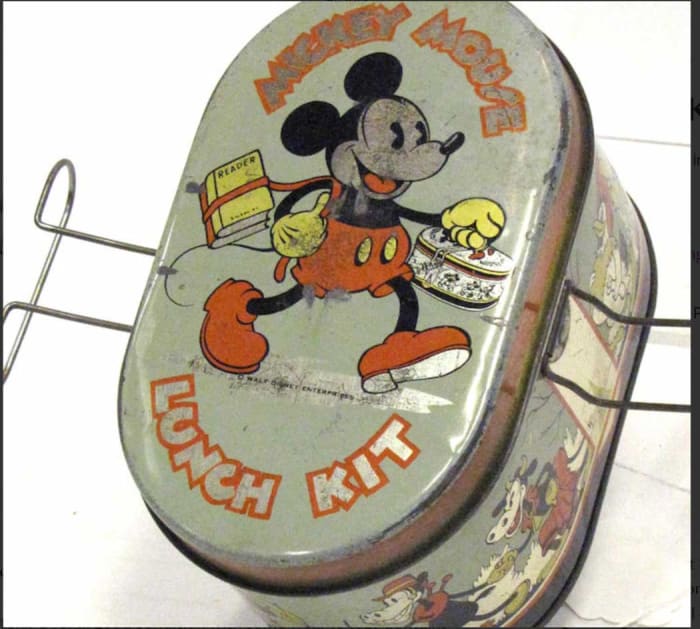
A scarce 1935 Mickey Lunch Kit by Handy. Kit depicts Silly Symphonies graphics with early pie-eyed Mickey and characters.
Image courtesy Bonhams
The lunch box market shifted almost immediately from rather bland black versions for workers to brightly colored and abundantly fun lunch mates for school kids everywhere.
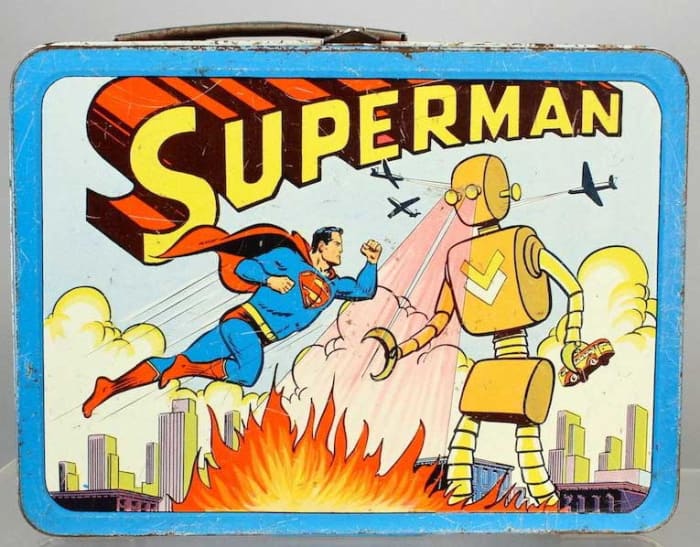
At the height of lunch box collecting, a 1954 Superman lunch box (Universal) sold for $19,250 at auction.
Courtesy Warman’s Lunch Box Field Guide
In 1953, American Thermos, Aladdin’s chief competitor, introduced the Roy Rogers box in full-color lithography. Aladdin countered with a full-color Hopalong Cassidy lunch box in 1954. And with that, the lunch box era had officially begun – as did the lunch box war between Aladdin and American Thermos, with the occasional challenge from the likes of Adco Liberty, Ohio Art and Okay Industries.
Metal lunch boxes dominated the school lunch scene in the 1950s, ’60s and ’70s with such licensed offerings as Superman, Bullwinkle & Rocky and Star Wars.
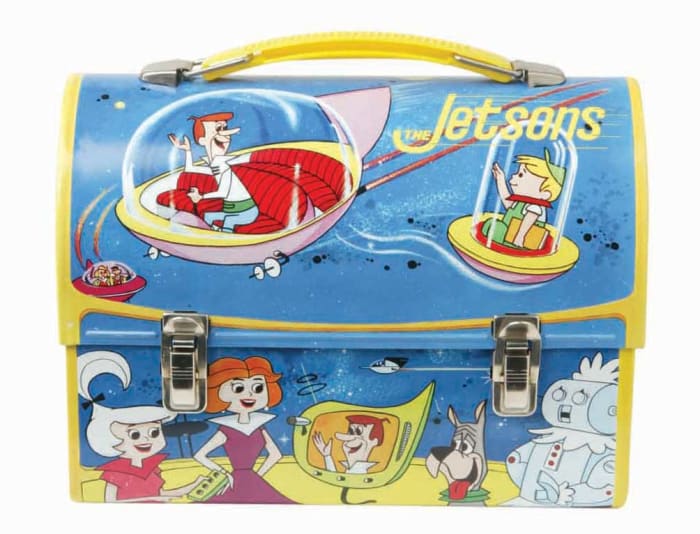
The Jetsons lunch box, Aladdin, 1963, a hugely important high-profile character box from the cartoon series.
At one time, collector demand for classic lunch boxes was insatiable, with a 1954 Superman lunch box (Universal) selling for $19,250 at auction. While values for metal lunch boxes have cooled considerably from those halcyon days, lunch boxes are still popular items to collect.
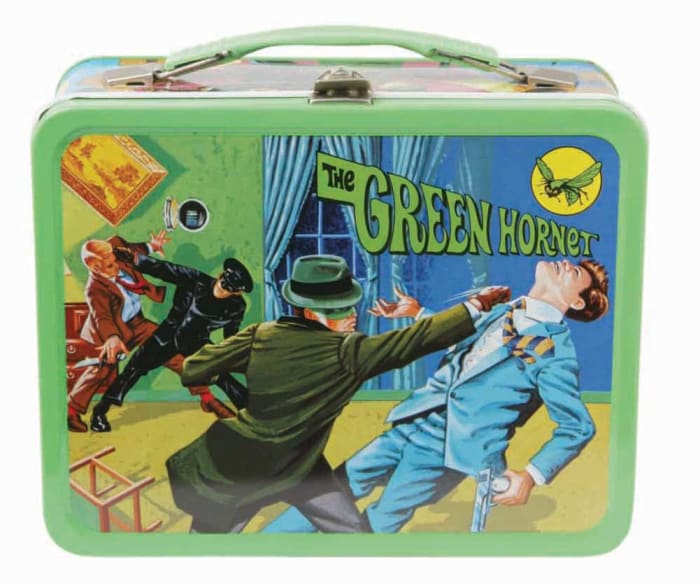
The Green Hornet, King Seeley Thermos, 1967. The lunch box was based on TV show of the same name, which starred a young Bruce Lee as Kato.
Courtesy Warman’s Lunch Box Field Guide
In 1971, a concerned group of parents argued metal lunch boxes could be used as weapons in schoolyard tussles. Their concern led to new safety legislation. By 1986, Aladdin and American Thermos were producing only plastic boxes.
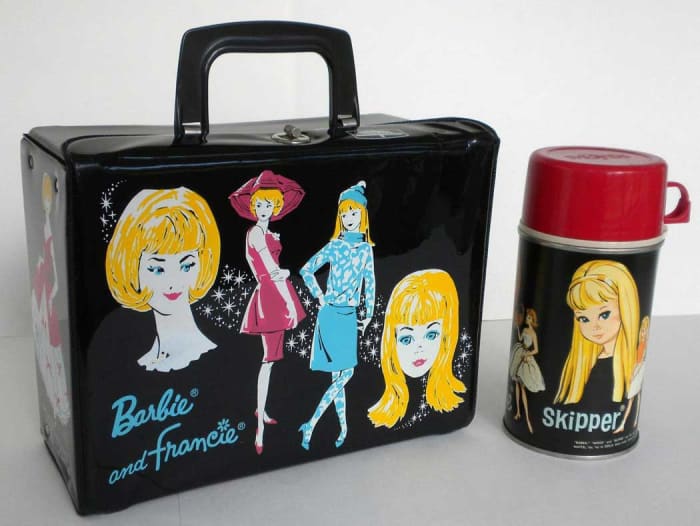
This rare 1965 Barbie and Francie vinyl lunch box with thermos was made by King Seeley.
Courtesy Warman’s Lunch Box Field Guide
With few exceptions, lunch boxes today are made of vinyl and are far better insulated than their metal forefathers, keeping lunches fresher longer.
Unfortunately, what was gained in refrigeration efficiency was lost, ironically enough, in cool. The vinyl box simply couldn’t compete with the warmth felt for the classic metal lunch box. And thus, a heavy metal era came to a chilly end.
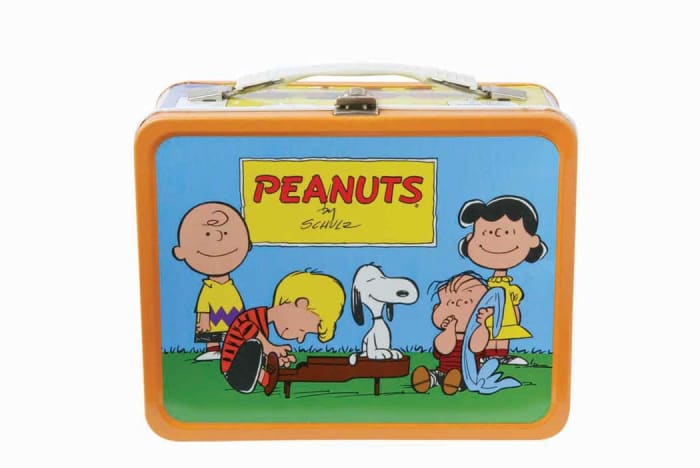
King Seeley Thermos produced this Peanuts Lunch box in 1966.
Courtesy Warman’s Lunch Box Field Guide
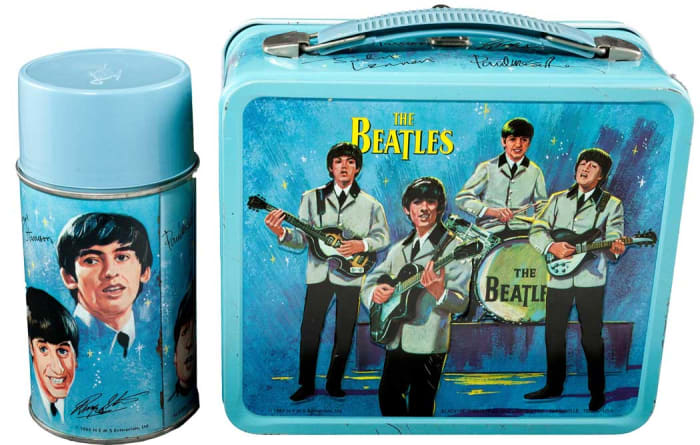
The Beatles lunch box, Aladdin, 1966, remains an extremely popular and valuable lunch box.
Courtesy Heritage Auctions

Premiering in 1966, the TV show Family Affair follows Bill Davis, a swinging bachelor whose life is turned upside-down by the arrival of his newly orphaned nieces and nephew — young twins Buffy and Jody and their teenaged big sister, Cissy. The lunch box by King Seeley Thermos was released in 1969.
Courtesy LiveAuctioneers
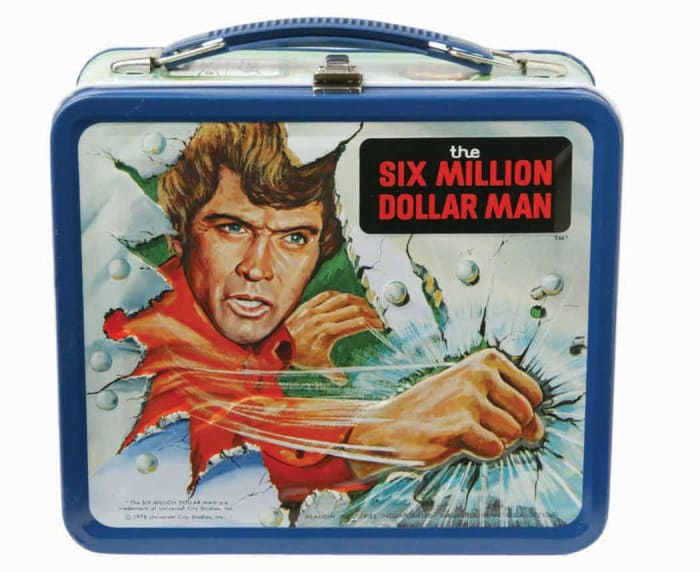
Produced by King Seeley Thermos, The Six Million Dollar Man lunch box was released in 1974.
Courtesy Warman’s Lunch Box Field Guide
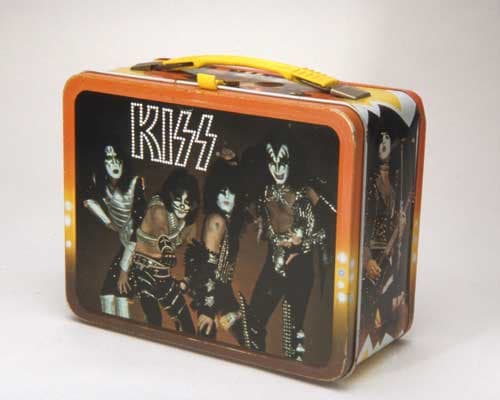
The Kiss lunch box was manufactured by Thermos in 1977, featuring the wildly popular rock band Kiss.
Smithsonian National Museum of American History
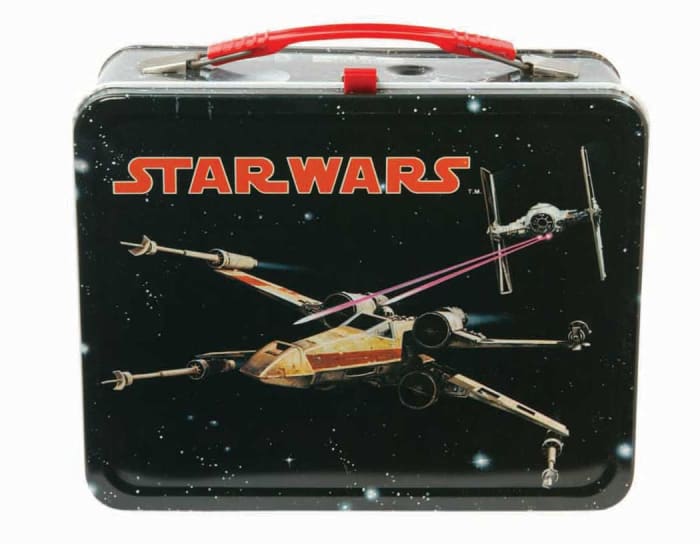
King Seeley Thermos produced the Star Wars lunch box in 1978.
Courtesy Warman’s Lunch Box Field Guide
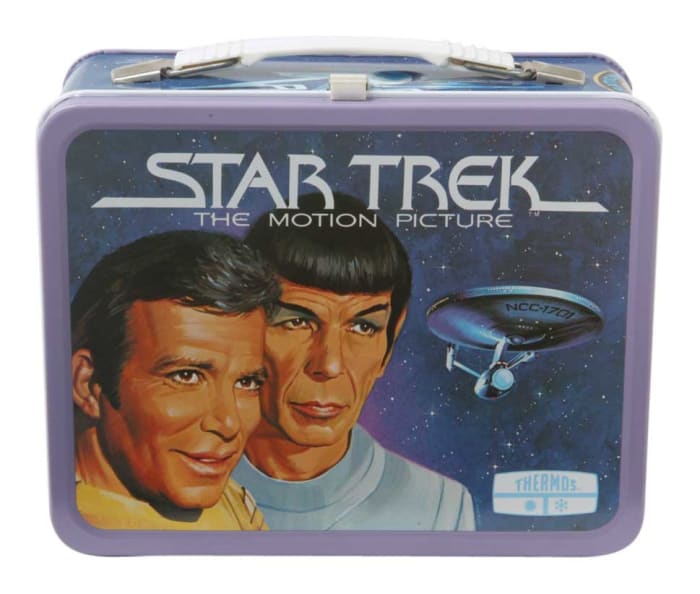
This Star Trek lunch box was released in 1980 by King Seeley Thermos.
Courtesy Warman’s Lunch Box Field Guide

